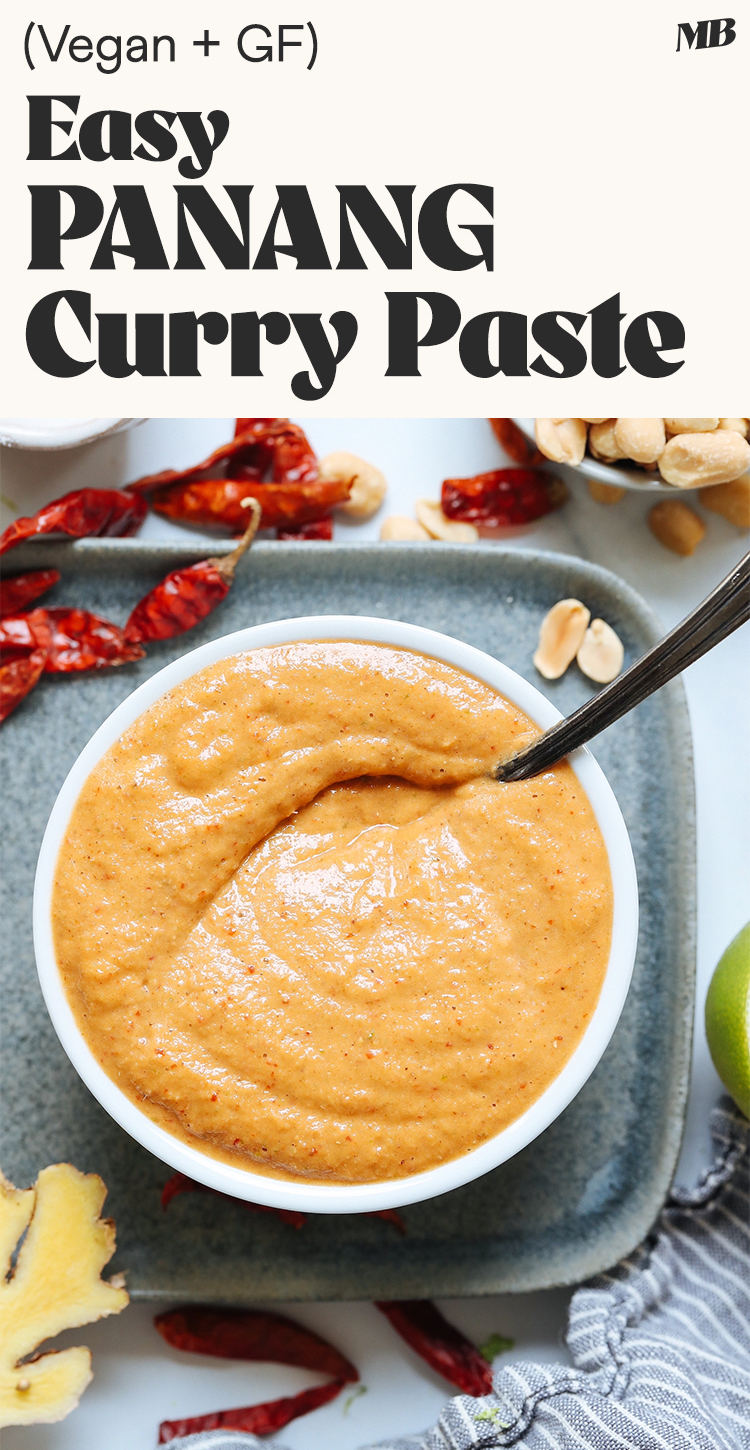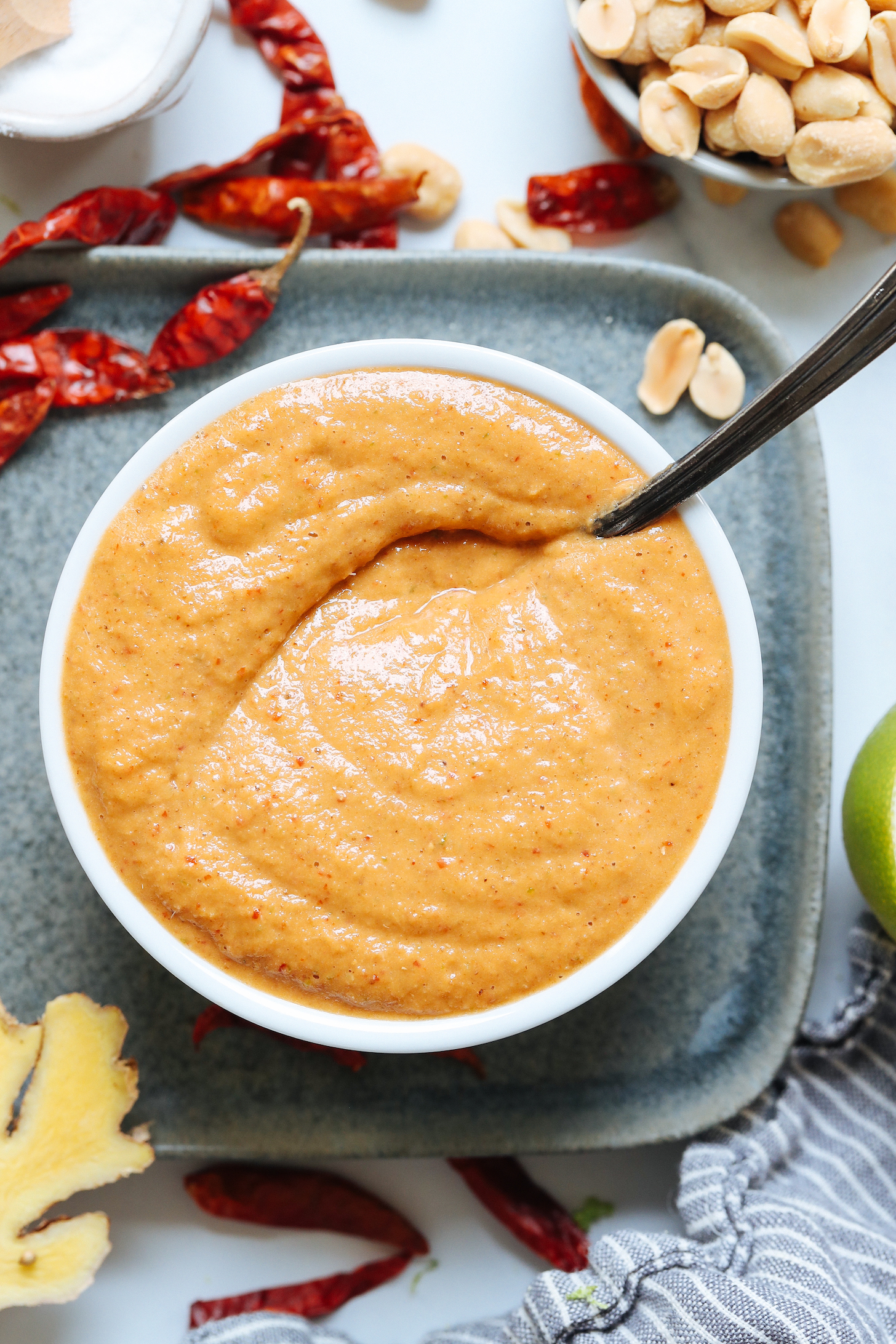
Oh, curry! You never let us down. We’ve made green and red curry pastes, but considering Panang curry is one of our favorite Thai curries, it was time to try our hand at our homemade Panang curry paste!
Our inspired version is vegetarian, gluten freeAnd Naturally sweet But makes a similar the rich, peanuts, savory A curry that’s as good as takeout (stay tuned for that recipe!) Show us how it’s done!
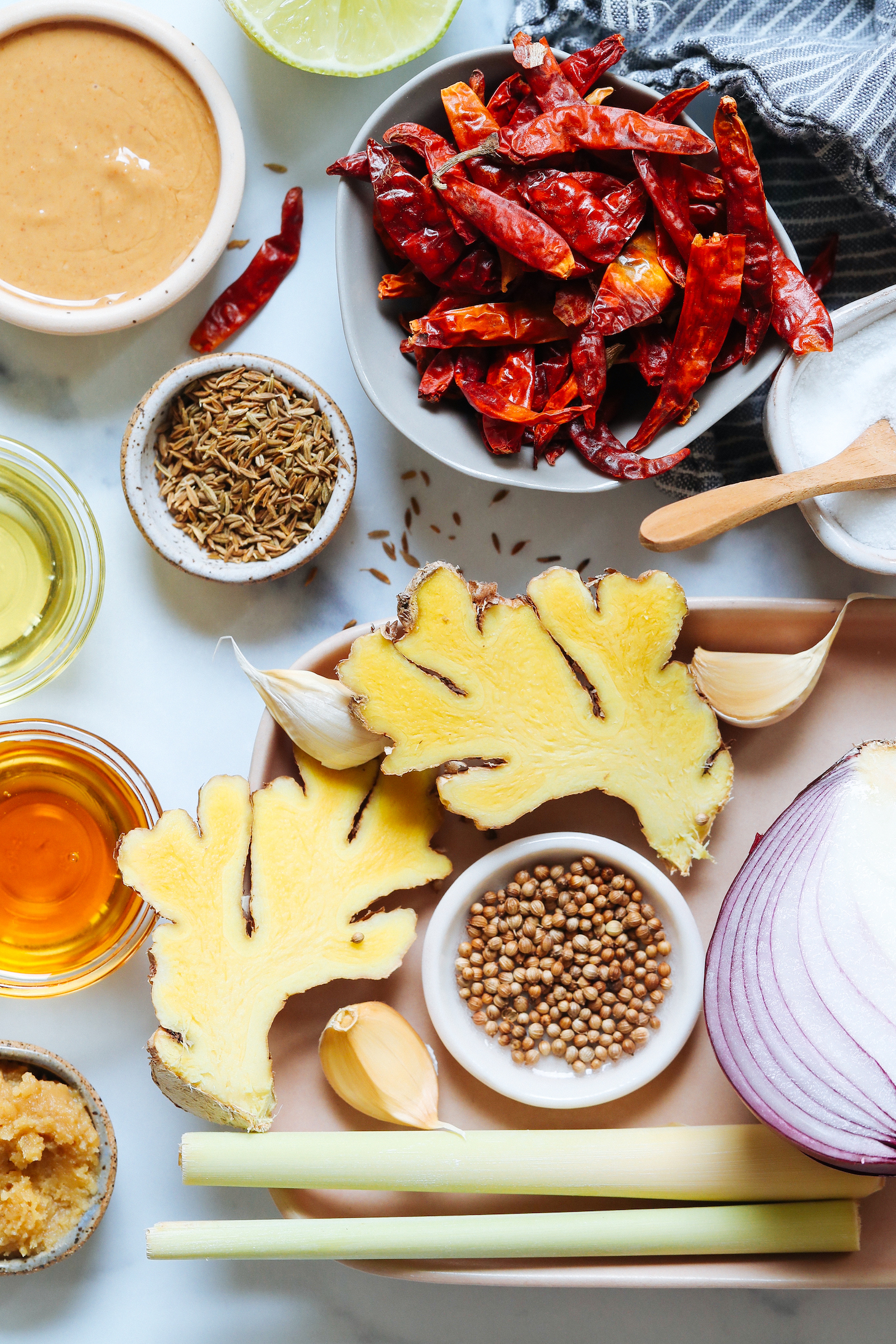
What is Panang Curry Paste?
Panang curry paste is the main flavor ingredient in the wonderful, savory-sweet Thai Panang curry. Common ingredients used in its preparation include dry chilies, galangal, lemongrass, makrut lime zest, coriander root and seeds, garlic, shallots, shrimp paste, salt, and peanuts.
Our version is not traditional but an inspired vegan dish made without shrimp paste and with ingredients easily available in our region! Learn more about Panang curry paste and find more traditional recipes from Hot Thai Kitchen.
How to Make Panang Curry Paste
Our version starts with deseeding and rehydrating Dried Thai red chili peppers. These powerful little peppers are spicy and can make your skin feel burning, so you’ll want to either wear gloves or wash your hands very well afterwards and avoid touching your eyes and face for a while!
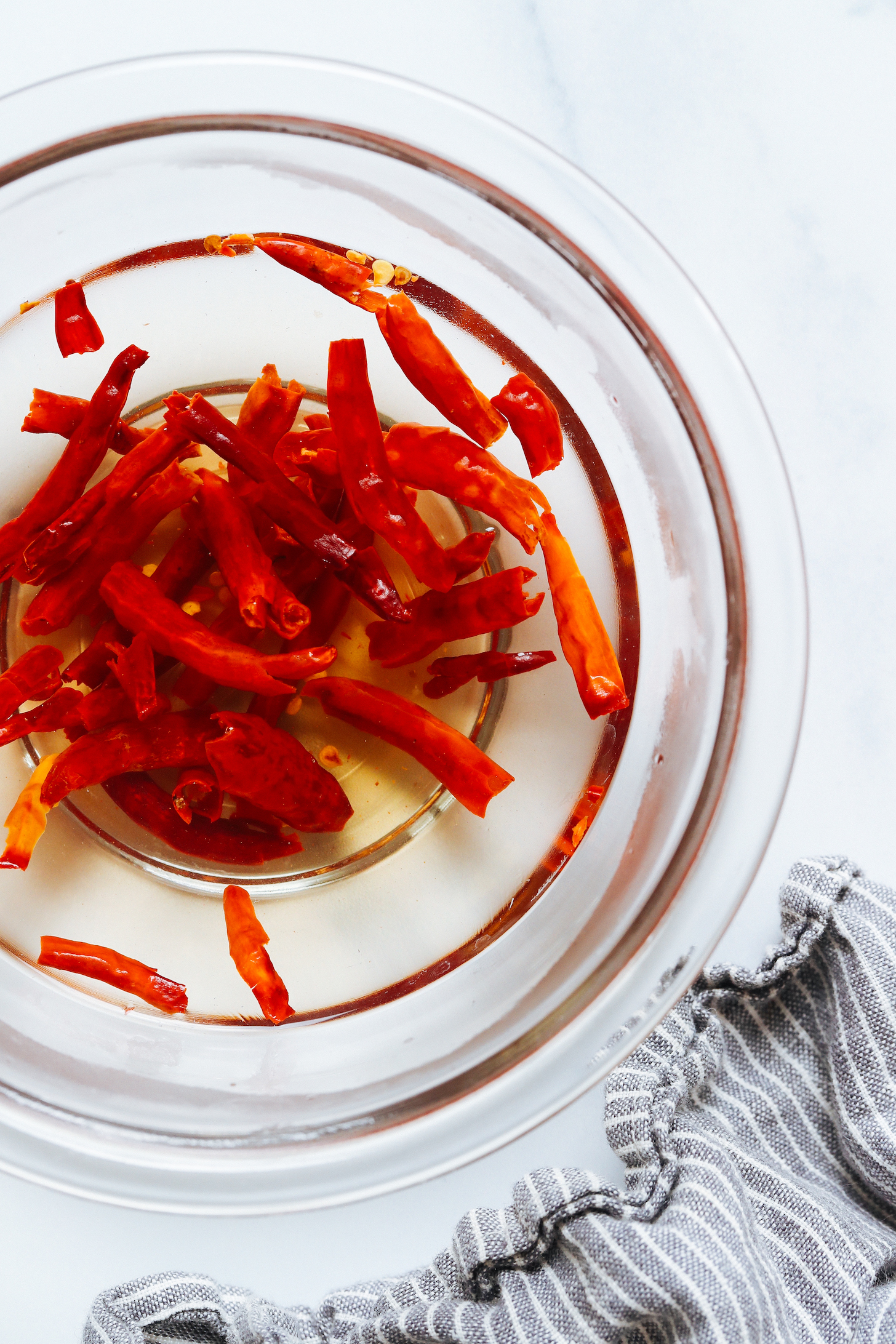
Next, we toast and grind Cumin and coriander seeds to taste them. Be sure to take a moment to appreciate their fragrance because there is nothing like it!
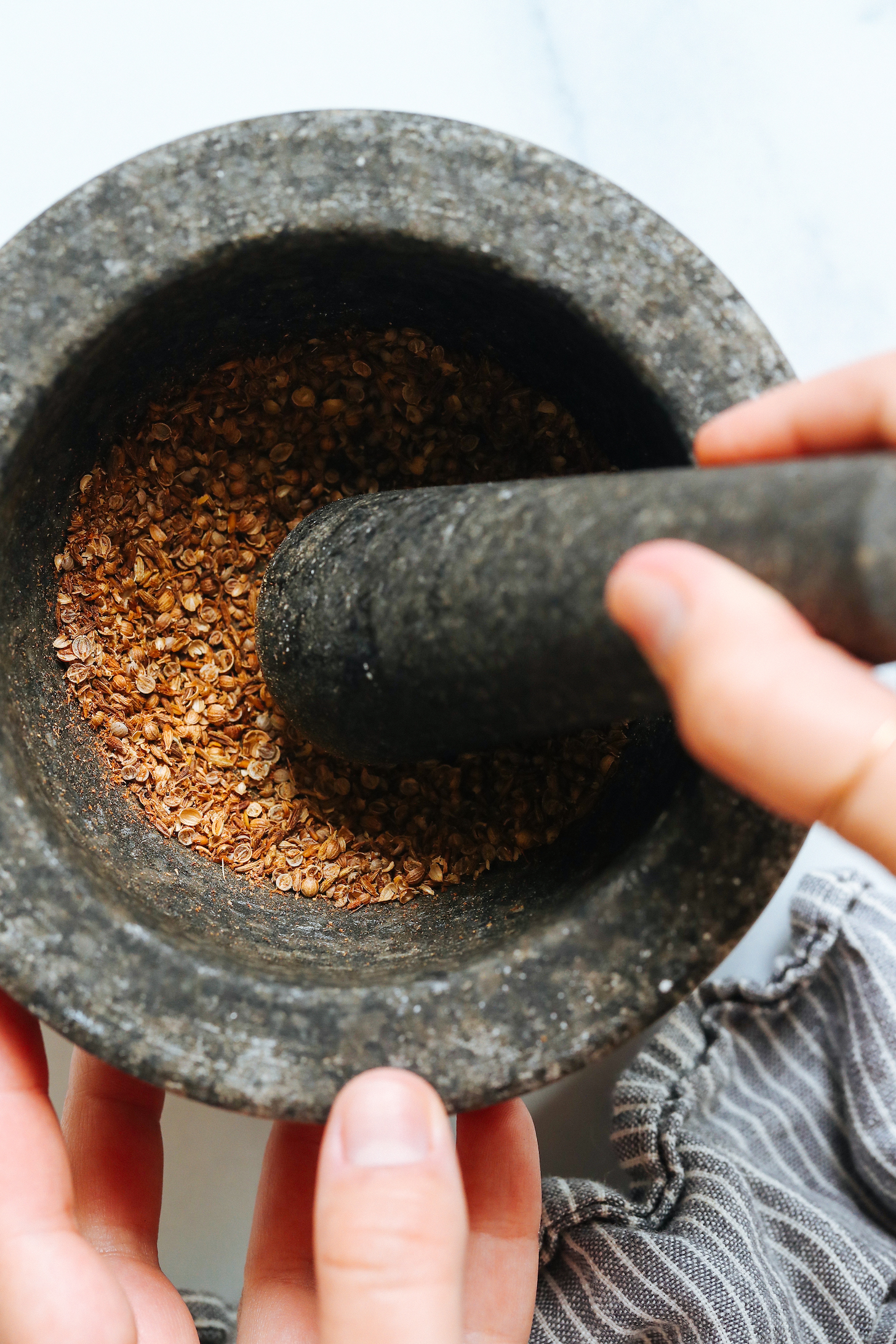
Then it’s time to bring it all together in a blender. Zesty lime and fresh ginger Makrut replaces the lime zest and galangal used in more traditional recipes. Miso paste isn’t traditional either, but we’ve found it does a great job of replacing the umami typically provided by shrimp paste.
Nut butter Replaces peanuts to create a creamy base. Maple syrup Balances the heat and we’ve kept some classic essentials Garlic and lemongrass. Salt, red onion, and oil or water are left to encourage mixing.
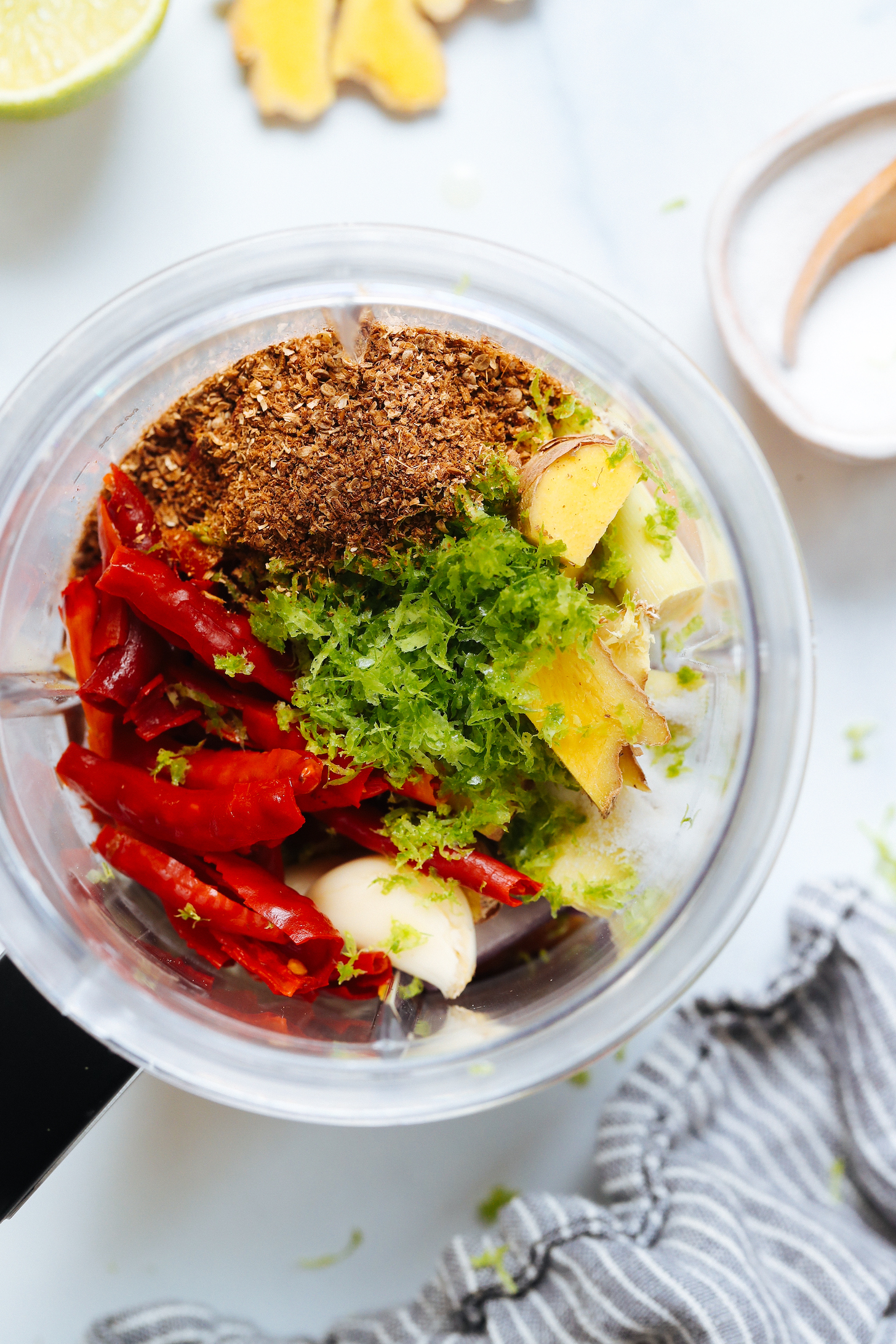
We hope you like this Panang Curry Paste! This is:
delicious
spicy
bright
Zesty
peanuts
And so versatile!
It’s ideal for making panang curry (recipe coming soon), soups, sauces, salad dressings and more! No matter which dish you choose, we feel it will be spicy and pair perfectly with cool Thai-inspired dishes like our Vegan Thai Iced Tea, Rainbow Spring Rolls or Vegan Papaya Salad.
More flavor-packed DIY sauces
Let us know if you try this recipe! Leave a comment, rate it and don’t forget to tag a photo @minimalistbaker on Instagram Cheers, friends!

serving 12 (2-tablespoon serving)
Prevent your screen from going dark
- 1/4 the cup Dried Thai Chili* (~25 small Thai chilies)
- 1 ½ teaspoon Whole coriander seeds
- 1 ½ teaspoon Whole cumin seeds
- 1/2 the middle Red onion, roughly chopped (1/2 medium onion yields ~ 1/2 cup or 80 grams // or sub shallot)
- 1/3 the cup Nut butter
- 1/4 the cup Maple syrup
- 1-2 table spoon Avocado or olive oil (if oil free, sub water)
- 1 table spoon White, yellow or chickpea miso paste (Make sure gluten-free if needed // Learn about miso here)
- 2 table spoon Lemongrass, roughly chopped (1 stalk yields ~ 2 tablespoons)
- 2 ½ table spoon Fresh ginger, roughly chopped (2-inch pieces yield ~ 2 ½ tablespoons or 20 grams)
- 4 teaspoon Lemon extract (2 large limes yield ~ 4 tbsp)
- 4 large cloves Garlic, peeled
- 2 teaspoon Sea salt
-
You may want to wear gloves if you have sensitive skin and/or wash your hands Thoroughly After deicing. See more in the notes below.First, carefully cut the Thai peppers by trimming the stem ends and making a lengthwise slit through each pepper, opening it up and scraping out the seeds with your fingers. Place your diced peppers in a heatproof bowl and cover with boiling water. Set aside.
-
Add whole coriander and cumin seeds to a small pan and toast over medium-low heat for 4-5 minutes or until fragrant and slightly deeper in color, stirring/stirring occasionally. Be careful not to burn!
-
Once the seeds are toasted, add a mortar and pestle and crush a bit. If you don’t have a mortar and pestle, cool the seeds slightly, add them to a sandwich bag and crush them with a rolling pin or a heavy pan. Set aside.
-
Drain the soaked peppers and in a small blender (or small food processor) add the toasted spices and remaining ingredients (onion, peanut butter, maple syrup, oil/water, miso paste, lemongrass, ginger, lime zest, garlic, and salt).
-
Blend until a paste forms, scraping the sides as needed. Lemongrass can be hard to grind at first, but give it time! Add more water or oil as needed to encourage mixing.
-
Taste and adjust flavors as needed, adding a squeeze of more lime for brightness, salt for overall flavor, pepper for heat, maple syrup for sweetness, oil (or water) for creaminess/thinning, garlic for zing, or for richness. Add peanut butter.
-
Store curry paste in a jar in the refrigerator for up to 10 days. For longer storage, transfer the paste to an ice cube tray, freeze, then store in a freezer-safe container for up to 1 month.
-
This curry paste is ideal for curries (recipe coming soon!), soups, sauces, salad dressings and more!
*If you prefer a milder curry, we recommend dried guajillo chiles.
*If your hands burn after cutting a pepper, we’ve found the best remedy is to rub some oil (olive or avocado works well) on your hands, then wash them thoroughly with soap (dish soap works best). It works because the spice comes from the pepper oil, and rubbing the neutral oil on your hands helps attract and remove it. Stay safe out there!
*Recipe as written makes ~1 ½ cups of curry paste.
*Nutrition information is a rough estimate calculated with less avocado oil.
Worship: 1 (two tablespoons) serving Calories: 83 Sugars: 8.6 g Protein: 2.2 g Fat: 4.8 g Saturated Fat: 0.7 g Polyunsaturated Fats: 0.9 g Monounsaturated fats: 2.7 g Trans fats: 0 g Cholesterol: 0 mg Sodium: 427 mg Potassium: 102 mg Fiber: 1 g Sugar: 4.8 g Vitamin A: 659 IU Vitamin C: 1.4 mg Calcium: 20 mg Iron: 0.4 mg


